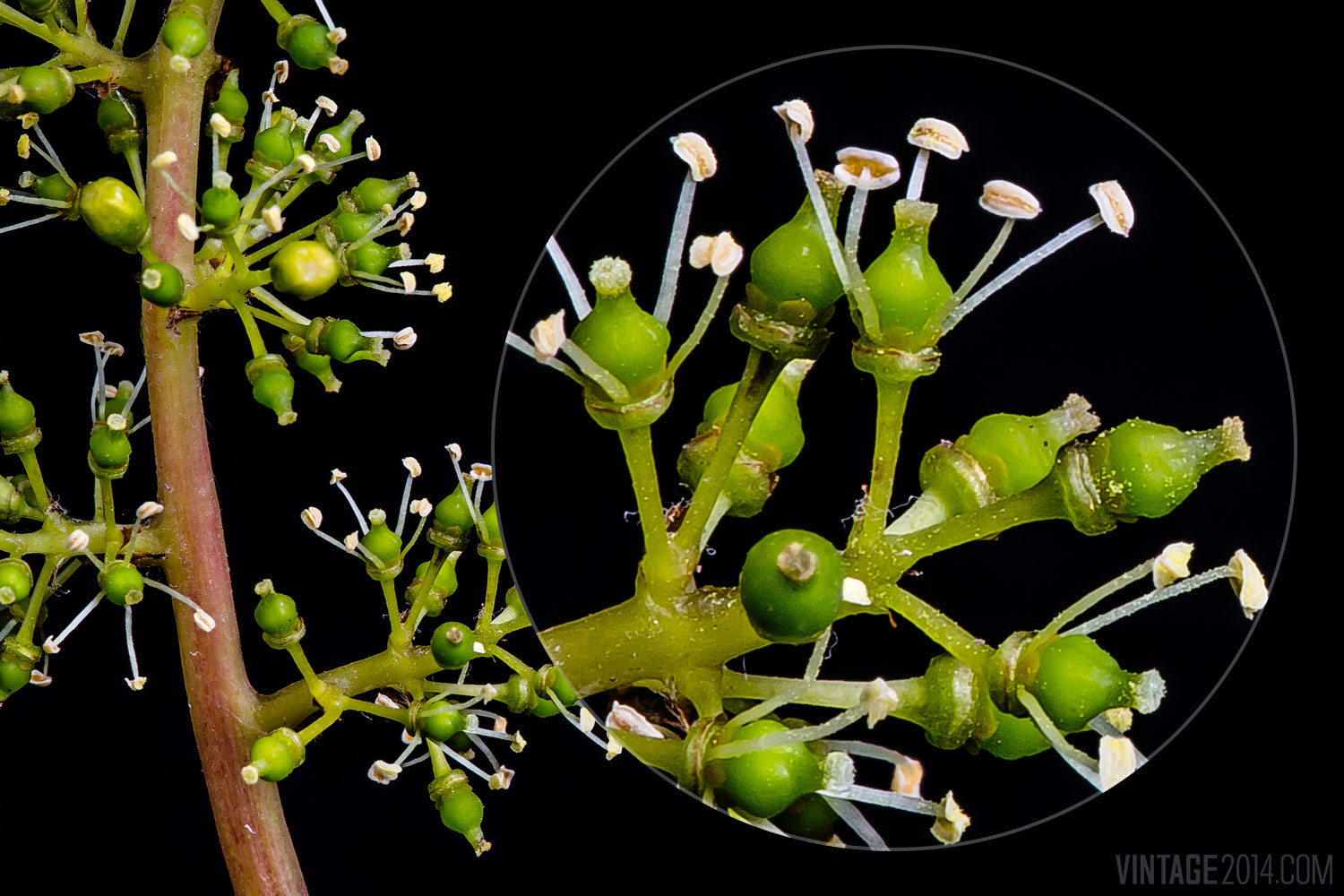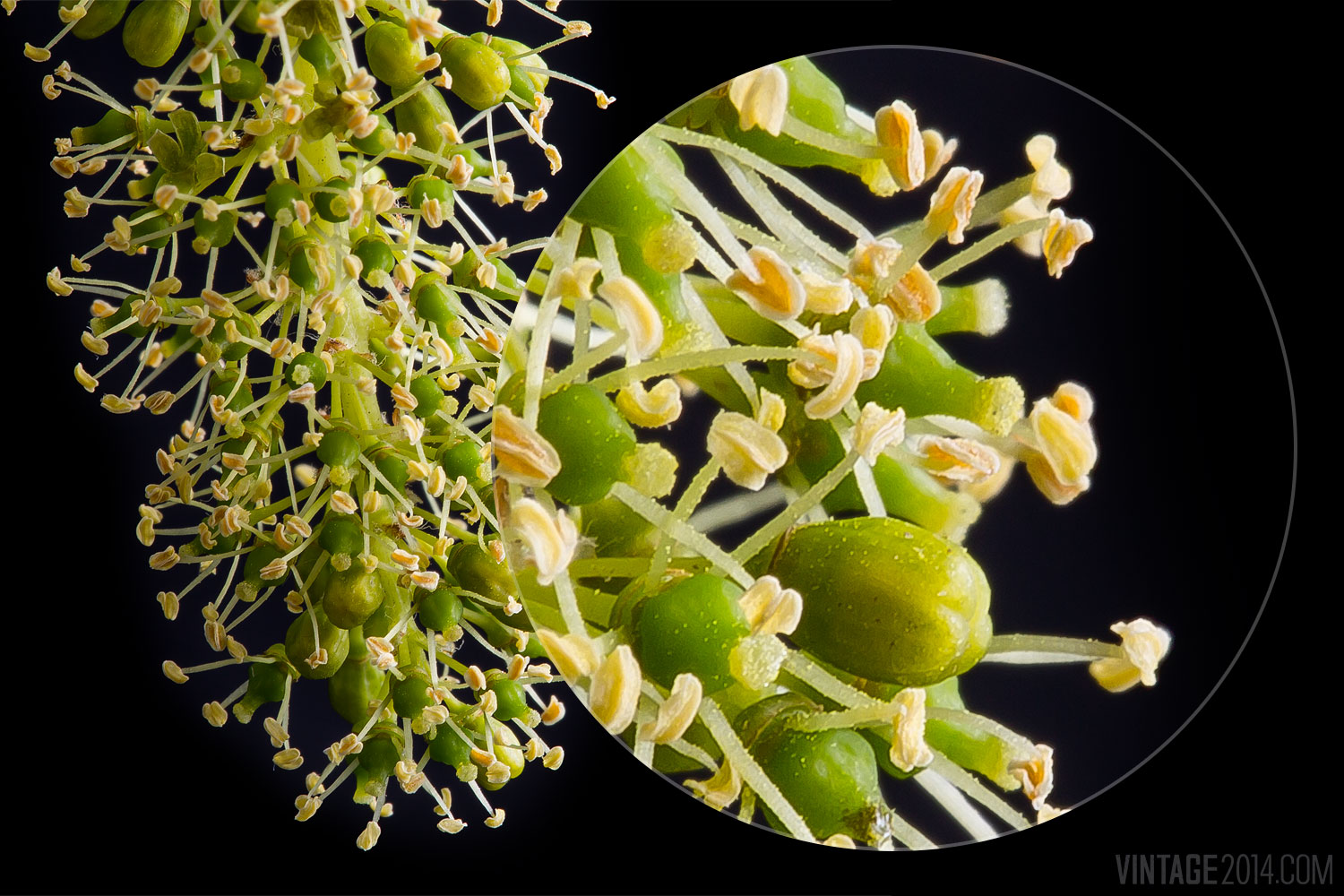Shortly after the grape cluster appears and grows a bit larger, which takes anywhere from three to eight weeks, tiny fragrant flowers appear all over it. This very important phase in viticulture is called “bloom.”
White varieties tend to flower first, with red grape varieties following closely behind.

The individual flowers are typically only four to five millimeters long. They are grouped together in a little cluster. Before bloom itself, the small cap, which consists of fused petals, keeps the other flower parts safe and enclosed within. When bloom begins, these petals detach, exposing the pollen-covered stamens. Pollination and fertilization can then occur, resulting in a grape. This process is mostly self-contained within the vine, which can self-pollinate, but insects and wind can play a role as well.

If, during flower development, the cap becomes tough and the little grape inside cannot break through, it will actually shatter from the pressure. If this occurs it can destroy the entire crop. During bloom, sunny weather is critically important to ensure an even fruit set. When the weather is warmer, set occurs even more quickly, which is beneficial because it typically provides a very uniform crop, meaning most of the berries are about the same size on each cluster. Wind can play a role in bloom as well, as strong gusts can cause shoot loss, upsetting the balance of the vine.
It is also during this time that the buds for the next year’s crop begin to form.
